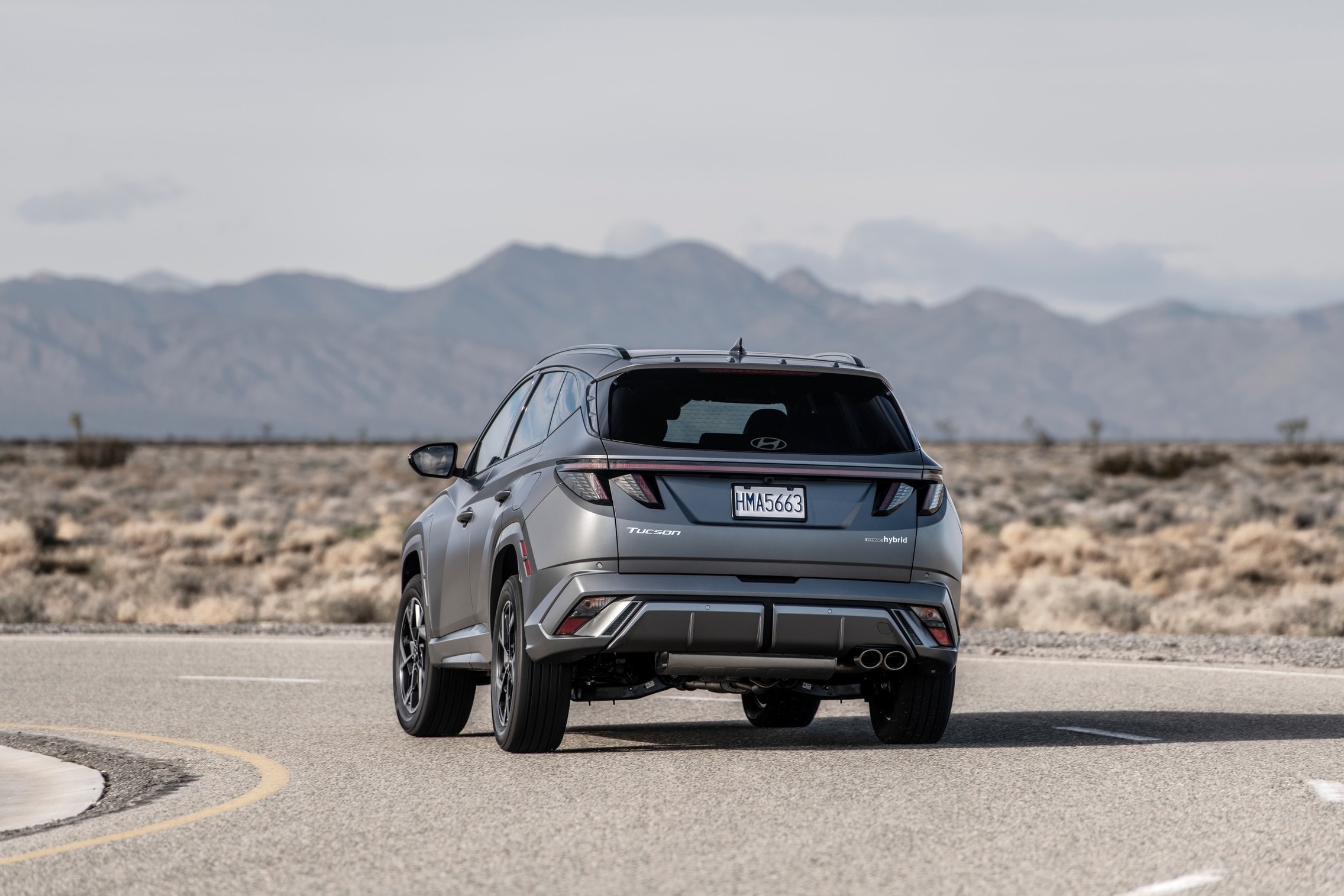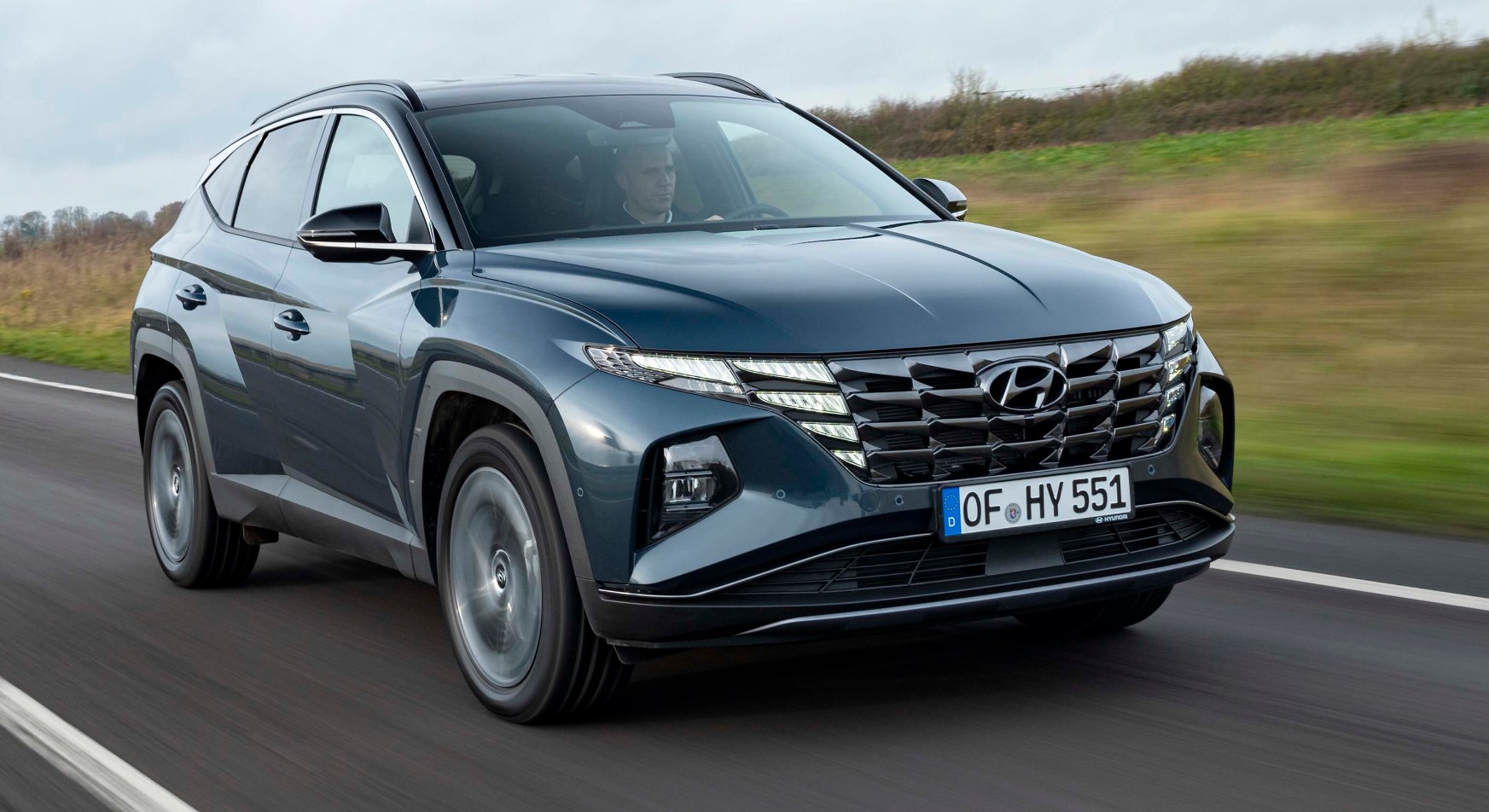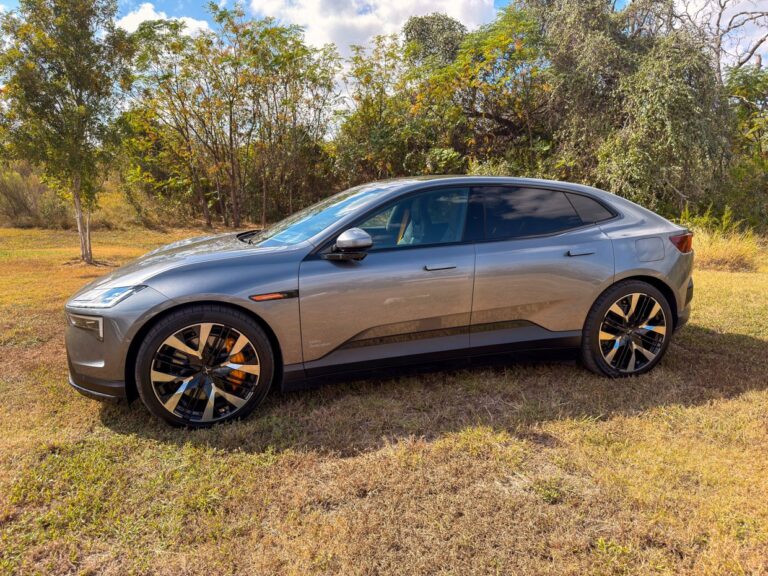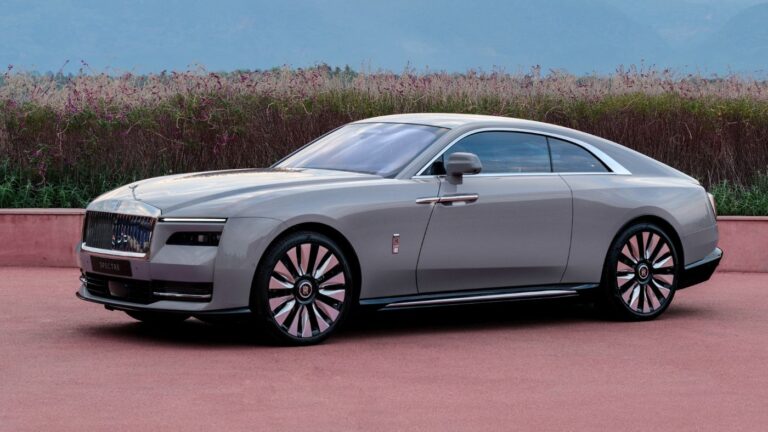
2027 Hyundai Tucson
A prototype for the U.S.-specification version of the forthcoming 2027 Hyundai Tucson has been spotted undergoing testing on public roads in California, a clear confirmation that Hyundai’s next-generation compact SUV is steadily progressing toward its eventual North American debut.
The heavily disguised prototype, which was captured on video by the automotive channel KindelAuto, shows extensive camouflage covering its bodywork, yet it still reveals clear hints of an all-new design direction and notably upgraded, more substantial proportions for the vehicle.
The vehicle’s front end appears to be more upright and muscular in its stance, while a comprehensively reworked lighting signature seems to mirror the design that is widely expected from the global model redesign, which was initially previewed by Hyundai earlier this year.
The overall shape of the prototype looks distinctly boxier and more squared-off than the current model, featuring pronounced, squared-off wheel fenders and sharper character lines that align it more closely with Hyundai’s very latest design language seen on other new models.
The test vehicle’s visibly larger grille opening and newly designed LED daytime running lights strongly suggest a focused effort on bolder, more assertive styling that aims to move the Tucson further upmarket within the highly competitive compact SUV segment.
Inside the cabin, although not visible in these spy photos, early renderings and industry reports could point toward a significantly more tech-forward interior environment built around Hyundai’s new, advanced Pleos operating system.
Buyers should expect modern features such as expansive dual-screen layouts, streamlined and minimalist physical controls, and the addition of more sophisticated Level 2 driver-assistance features as standard or optional equipment.
In a major strategic shift, the new Tucson is highly likely to discontinue traditional gasoline-only powertrains for the U.S. market, instead offering a range of hybrid and plug-in hybrid variants exclusively from its launch.
This electrified-focused approach puts it in direct and head-to-head competition with rivals like the Honda CR-V hybrid, a matchup that effectively highlights just how far Hyundai’s electrified vehicle lineup has evolved in recent years.

Both of these popular crossovers strongly appeal to efficiency-minded family buyers, but Hyundai’s increasing focus on interior refinement, premium materials, and seamless software integration could potentially give it a stronger and more distinctive foothold in this crowded segment.
Although the prototype is still wrapped in heavy, patterned camouflage, the California test vehicle matches very closely with the design looks that were predicted by analysts and leaked information back in September.
This strongly suggests that the U.S. version of the Tucson will not stray far from the global model’s overarching design theme. Expect a front fascia that is visually reminiscent of the larger Hyundai Kona and the all-new Santa Fe, featuring sleekly integrated daytime running lamps and more pronounced, sculpted surfacing across the hood and body sides.
Underneath the new bodywork, the vehicle’s platform will continue to be engineered to support multiple electrified configurations, including improvements for better hybrid fuel efficiency and support for faster plug-in hybrid charging capabilities.
Early reports from suppliers indicate that Hyundai will introduce only small calibration changes specifically for the U.S. market, including bespoke ride and handling updates that are better suited for the characteristics of American highways.
The Tucson remains Hyundai’s single best-selling model on a global scale, and its comprehensive redesign is absolutely central to the brand’s ambitious next phase of electrified growth and market expansion.
A sharper, more premium exterior look paired exclusively with modern hybrid and plug-in hybrid powertrains could successfully push it further into the heart of mainstream competition, enabling it to challenge leaders like Honda, Toyota, and Ford with their latest compact SUV offerings.
The California sighting provides tangible evidence that Hyundai’s North American engineering and development teams are now deep into the final stages of real-world testing, signaling a target launch window for late 2026 or early 2027 as a 2027 model.
If these early visual impressions and reported specifications hold true through to production, the new Tucson could emerge not just as another routine model refresh but as a true cornerstone vehicle, one that actively defines Hyundai’s design identity and technological ambition for the remainder of this decade.



